Business
The green steel firms looking to revive US steel making
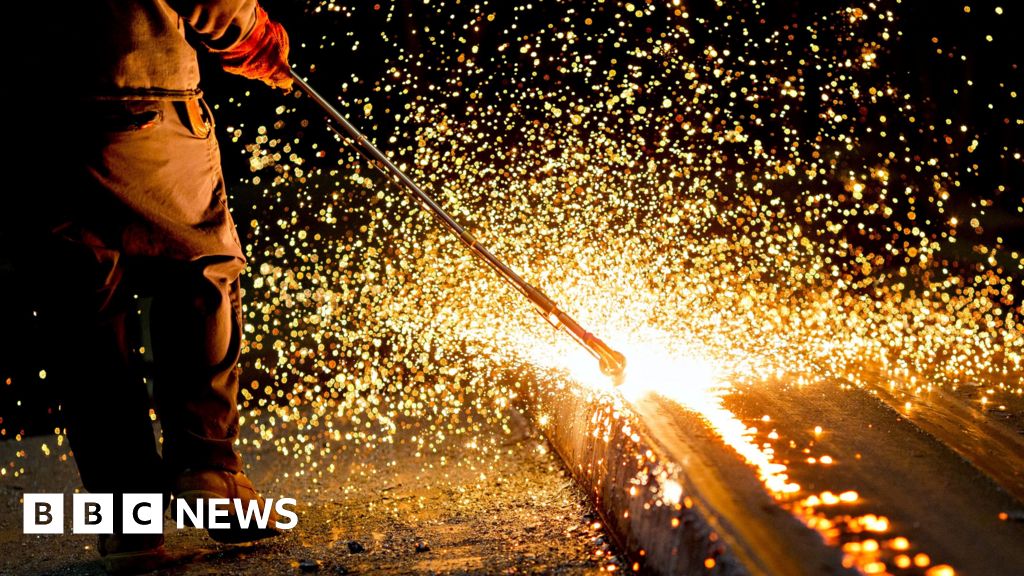
Chris BaraniukTechnology Reporter
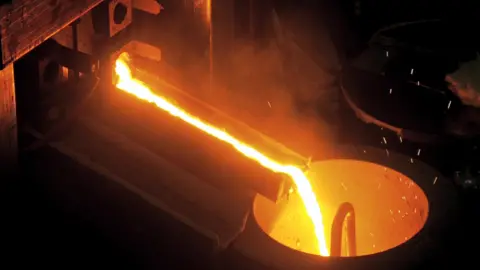 Boston Metal
Boston MetalAn activity centre for babies and toddlers, an Indian restaurant, an indoor golf centre – and a mini experimental steel plant. These businesses are among those that make up a small retail and industrial estate in the city of Woburn, Massachusetts.
“People are dropping off their kids. That kind of shows you an extreme example of what the future of steel looks like,” says Adam Rauwerdink, vice president of business development at US-based green steel start-up, Boston Metal. “You can be making steel and sharing a parking lot with a daycare.”
Boston Metal has come up with a way of using electricity to remove oxides and other contaminants from iron ore, which is the substance you have to mine from the Earth before you can make new steel.
The process involves distributing the ore within an electrolyte and then using electricity to heat this mixture to 1,600C. Molten iron then separates from impurities and can be tapped off.
Traditionally, extracting that all-important iron from ores requires blast furnaces that run on fossil fuels. But the iron and steel industry are responsible for 11% of global emissions – a huge amount, equivalent to all the world’s private cars and vans – and so now a race is on to find greener ways of producing these important metals.
US companies are, arguably, at the forefront. Steelmaking in the US is already greener than in many countries, thanks to the popularity of electric arc furnaces there. These furnaces use electricity, not heat from burning fossil fuels, to melt scrap steel – for example – and recycle it.
Plus, a handful of emerging start-ups such as Boston Metal say they can go one better and use electricity for the iron-making process, a crucial step in making brand new, or virgin, steel.
However, the Trump administration has taken a less than enthusiastic stance towards renewable energy and decarbonisation projects. It remains to be seen whether these new start-ups will make a big, molten splash in the steel industry any time soon.
Switching from traditional blast furnaces to electric arc furnaces can lower carbon emissions per tonne of steel produced from 2.32 tonnes of CO2 to 0.67 tonnes of CO2.
For iron-making, some plants could use green hydrogen – made using electricity from 100% renewable sources – says Simon Nicholas, lead steel analyst at the Institute for Energy Economics and Financial Analysis.
But switching iron and steel-making plants over to green hydrogen hasn’t gone as smoothly as some had expected.
In June, Cleveland-Cliffs, a major US steel producer, appeared to back away from its plans to build a $500m (£375m) hydrogen-powered steel plant in Ohio. The BBC has contacted Cleveland-Cliffs for comment.
“We’re seeing projects cancelled, proponents pulling out of projects all over the place,” says Mr Nicholas, of green hydrogen initiatives, specifically.
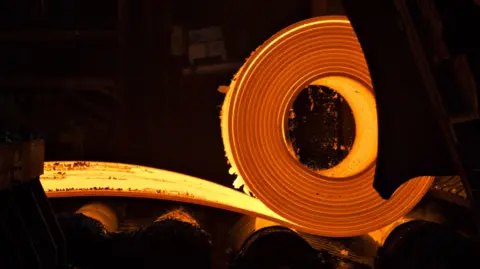 Bloomberg via Getty Images
Bloomberg via Getty ImagesPlus, there is a limit to how much steel-making can rely on electric arc furnaces since they currently largely rely on a supply of scrap steel.
A relatively low supply of scrap steel in China, versus demand, has slowed the rollout of electric arc furnaces there, according to some analyses.
These headaches would suggest that there is a niche for companies developing alternative ways of making iron and steel. Boston Metal is one.
“It looks a lot like how we make iron and steel today – it’s a lot easier to conceive how that would get to scale [as a result],” says Paul Kempler, an expert in electrochemistry and electrochemical engineering at the University of Oregon.
However, he notes that there are still challenges in ensuring that electrolysis systems like this don’t corrode too quickly over time. Boston Metal says it hopes to have its first demonstration-scale steel plant operational by 2028.
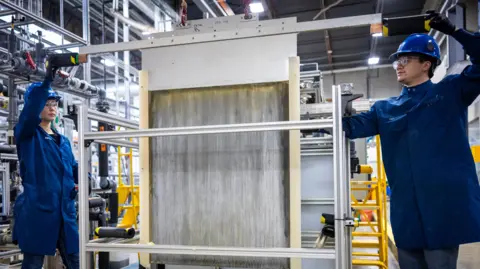 Electra
ElectraSeparately, the US firm Electra is taking a different approach to producing highly purified iron from ores. Unlike Boston Metal, Electra’s process runs at a relatively low temperature, around 60-100C. First, iron ore is dissolved into an acidic solution and then an electrical charge causes the iron to collect onto metal plates. This is similar to the process currently used for making sheets of copper and zinc today.
“These plates are extracted automatically out of the solution and the iron is harvested,” says Sandeep Nijhawan, co-founder and chief executive. A demonstration plant in Colorado, which could produce 500 tonnes of iron annually, is currently set to open next year.
Initially, iron produced in this manner would cost more than iron made using traditional techniques. But that “green premium” could fall away should the company be able to scale sufficiently, says Mr Nijhawan.
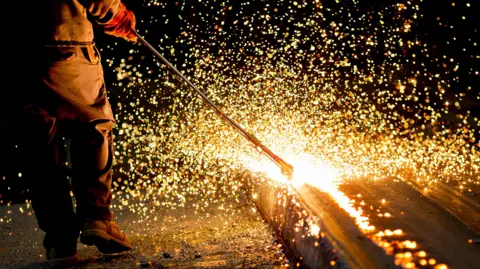 Bloomberg via Getty Images
Bloomberg via Getty ImagesMr Nicholas says that emerging technologies such as this are hopeful, but one challenge they face is in breaking into the market in a big way within just a few years, since the need to slash emissions and curb climate change is become more and more urgent: “We’re running short of time for addressing carbon emissions.”
Companies such as Electra and Boston Metal offer a completely different vision of the steel-making industry but they won’t get far without further investment – and a market that appreciates what they are doing.
President Donald Trump’s tariffs on steel imports to the US are supposedly designed to protect the domestic steel industry – and yet they risk raising the cost of steel substantially for US customers.
I ask whether Dr Rauwerdink, for one, is happy to see this move, or not. “We’re quite happy to see the strong focus on critical metals,” he says, arguing the tariffs are “beneficial” for Boston Metal.
Though he acknowledges that US government’s attitude towards renewable electricity, which Boston Metal says it want to prioritise as an energy source, has changed lately. And, globally, keeping the cost of renewable energy low is important for any firm hoping to electrify industries previously dominated by fossil fuels.
“The industry has growing pains there, for sure,” he says.
Business
Fare relief move: Air India waives change, cancellation fees on domestic bookings after IndiGo disruption – The Times of India

Five days after widespread flight disruptions triggered by IndiGo cancellations, Tata Group-owned Air India on Saturday announced a special waiver on change and cancellation charges for eligible domestic bookings, aiming to offer relief to affected travellers, PTI reported.The airline said customers who booked tickets on Air India or its subsidiary Air India Express on or before December 4 for travel up to December 15 can make a one-time change or cancellation without paying the usual fee, provided the request is made by December 8, 2025. In case of rescheduling, any fare difference will still be applicable.
Under the waiver, passengers can either reschedule their journeys to a later date within the validity of the purchased ticket without paying rescheduling charges or cancel their bookings and receive a full refund, with no cancellation fee applied, the airline said.Air India also said it, along with Air India Express, has “proactively” capped economy-class airfares on non-stop domestic routes from December 4 to prevent price spikes driven by automated demand-supply algorithms. The carriers are also in the process of ensuring compliance with the latest directive issued by the Civil Aviation Ministry on airfare caps.
Business
Volkswagen capex recalibration: Automaker pares 2030 investment to $186 bn; China, US headwinds grow – The Times of India

Volkswagen Group plans to invest €160 billion ($186 billion) through 2030, a scaled-down outlay that reflects tightening capital allocation as Europe’s largest automaker grapples with mounting pressure in its two biggest markets — China and the United States, Reuters reported.The investment figure, announced by Volkswagen CEO Oliver Blume, is part of the company’s rolling five-year capital expenditure plan, which is updated annually. The latest commitment compares with €165 billion earmarked for 2025–2029 and €180 billion for 2024–2028, with 2024 marking the peak year for spending.Since that peak, the group — which houses brands such as Porsche and Audi — has been squeezed by higher costs and weaker margins, hit by US tariffs on imported vehicles and intensifying competition in China. The strain has been felt most acutely at Porsche, which derives nearly half of its sales from the US and China combined.Porsche recently unveiled a significant rollback of its electric vehicle strategy as profits came under pressure. Speaking to Frankfurter Allgemeine Sonntagszeitung, Blume said the focus of the latest investment plan was firmly “on Germany and Europe,” particularly in products, technology and infrastructure.Blume added that discussions on an extended savings programme at Porsche are expected to continue into 2026. He also said he does not expect Porsche to grow in China, though localising production across the wider Volkswagen group remains an option. A China-specific Porsche model could make sense at some point, he said.On Audi, Blume noted that any decision on building a manufacturing plant in the United States would depend on whether Washington offers substantial financial support.Blume, who will step down as Porsche CEO in January to concentrate fully on running Volkswagen Group, said his recent contract extension as Volkswagen chief executive until 2030 signalled continued backing from the Porsche and Piëch families as well as the German state of Lower Saxony, the company’s largest shareholders.“But it is true, of course, that shareholders have suffered losses since Porsche went public three years ago. I, too, must face up to this criticism,” he said.
Business
How IndiGo Managed To Hold A Country Of 1.4 Billion People Hostage, Forced Govt To Bend Rules | Analysis
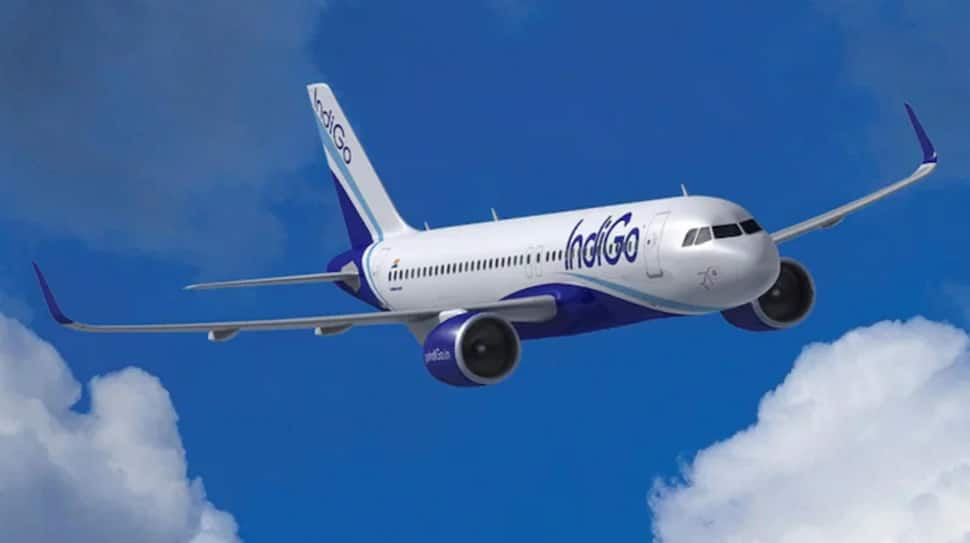
At a time when most Indian airlines are posting losses, IndiGo stands out as the only profitable carrier. Yet, while loss-making airlines managed to comply with DGCA directives within the allotted 18-month period, the one airline turning a profit failed to do so. The DGCA had provided ample time for compliance and workforce planning. But while others focused on meeting regulatory requirements, IndiGo appeared to pursue a different strategy—creating disruption to pressure the government. Incredibly, this approach worked: instead of imposing penalties, the government chose to relax the norms.
Aviation expert Harsh Vardhan squarely called this entire crisis a failure of IndiGo’s management. He said this is an extremely unprecedented situation. Passengers have been suffering for three days, and this is the peak tourist, wedding, and business season. IndiGo’s claim that the new FDTL policy suddenly created problems is nothing but a management failure. The policy wasn’t introduced overnight—it was formulated over years of deliberation and was finalised a year ago.
Harsh Vardhan reminded that the soft launch of the FDTL took place on July 1, 2025, and it was fully implemented from November 1, 2025. Other operators like Air India and SpiceJet made timely adjustments, which is why no major crisis emerged there. What surprises him most is the timing—if the policy was effective from November 1, why did this sudden “rampage” begin only a month later, at the start of December?
“The Government of India has decided to institute a high-level inquiry into this disruption. The inquiry will examine what went wrong at Indigo, determine accountability wherever required for appropriate actions, and recommend measures to prevent similar disruptions in the future, ensuring that passengers do not face such hardships again,” said the Ministry of Civil Aviation in a statement.
No one knows what will come out of the inquiry but, interestingly, IndiGo got rewarded for its blackmailing, instead of getting punished as the government relaxed norms.
Due to the IndiGo induced turbulence, the airfare on key routes touched Rs 80,000 to Rs 90,000. IndiGo didn’t merely cancel flights—it brought the system to a standstill, grounding aircraft, showcasing its clout, and effectively challenging the government to respond. Instead of asserting its authority, the NDA government backed down and rolled back its own directive. Through deliberate mismanagement, the airline pushed the system toward chaos. The suspension of over a thousand IndiGo flights severely disrupted the economy, sending hotel prices and ticket fares on other airlines soaring.
“The central government has ordered a probe and refunds—but the question is: when the monopoly of private companies and the government’s silence come together, who will protect the common people? Who are you working for? The public or the interests of big corporate houses?” Former Delhi Dy CM Manish Sisodia rightly questioned the government.
Shockingly, a country of 1.4 billion people relies primarily on just two major domestic carriers—IndiGo and Air India. IndiGo’s dominance is so significant that even Leader of the Opposition Rahul Gandhi publicly criticised the government for its oversight failures. “IndiGo fiasco is the cost of this Govt’s monopoly model. Once again, it’s ordinary Indians who pay the price – in delays, cancellations and helplessness. India deserves fair competition in every sector, not match-fixing monopolies,” said Gandhi.
For two decades, successive governments have allowed major airlines to collapse instead of restructuring them under new ownership. Jet Airways and Kingfisher Airlines are prime examples: both could have been revived by removing problematic promoters, yet no institutional mechanism was activated. The pattern repeated itself with Go First. When three airlines vanish in a decade, it signals not merely corporate failures but a systemic unwillingness to safeguard competition and consumer interest, wrote Prashant Tewari, public policy expert, mentioned in a recent report in The Pioneer.
Today, IndiGo controls over half of India’s domestic aviation market, with the Air India group holding most of the remainder. Smaller airlines operate on the margins, too weak to influence pricing or service standards.
Tewari wrote that disappearance of three airlines within years show government’s failure of protecting competition and consumer interest.
This duopoly-like environment has suffocated passengers: airfares on busy domestic routes routinely exceed those for comparable distances in Europe, Southeast Asia, or even the United States. A two-hour flight within India can cost more than a four-hour international journey elsewhere.
“IndiGo airline fiasco shows that Modi govt is either incompetent or in collusion. In either case, India deserves better. People have never suffered so much,” said Former Delhi CM and AAP convener Arvind Kejriwal.
For years, India’s aviation sector has needed at least eight to ten robust operators to foster true competition, stabilise fares, and minimise disruptions. Instead, new entrants face steep barriers, licensing moves painfully slowly, and foreign carriers seeking expansion are hindered by outdated protectionist policies disguised as national security concerns. This refusal to liberalise the skies has turned India into one of the world’s most expensive domestic aviation markets.
According to Tewari, the duoploy ecosystem suits certain entrenched interests. With opaque decision-making, India’s aviation sector functions with minimal accountability, he opined.
Though the government’s UDAN scheme was launched to make air travel accessible to the common citizen, soaring fares have made flying increasingly unaffordable.
Besides opening new airports, the government must urgently liberalise the sector, encourage new domestic players, revive grounded airlines under competent management, and allow credible foreign carriers to compete under regulated conditions. Until then, Indian travellers will continue to pay excessively, learning the same harsh lessons again and again.
-

 Tech6 days ago
Tech6 days agoGet Your Steps In From Your Home Office With This Walking Pad—On Sale This Week
-

 Sports6 days ago
Sports6 days agoIndia Triumphs Over South Africa in First ODI Thanks to Kohli’s Heroics – SUCH TV
-

 Entertainment6 days ago
Entertainment6 days agoSadie Sink talks about the future of Max in ‘Stranger Things’
-

 Fashion6 days ago
Fashion6 days agoResults are in: US Black Friday store visits down, e-visits up, apparel shines
-

 Politics6 days ago
Politics6 days agoElon Musk reveals partner’s half-Indian roots, son’s middle name ‘Sekhar’
-

 Tech6 days ago
Tech6 days agoPrague’s City Center Sparkles, Buzzes, and Burns at the Signal Festival
-

 Sports6 days ago
Sports6 days agoBroncos secure thrilling OT victory over Commanders behind clutch performances
-

 Entertainment6 days ago
Entertainment6 days agoNatalia Dyer explains Nancy Wheeler’s key blunder in Stranger Things 5







